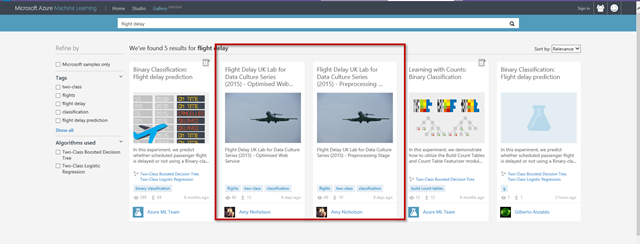Machine Learning for the Business Intelligence developer
Amy (the other half of the data duo in our team) and I have been gate crashing the Data Culture series and other events recently to see who’s interested in Azure Machine Learning (MAML) . It turns out that data scientists are pretty comfortable using their own tools and scripts be that in R and Python and while they are interested in MAML they don’t see then need for it. However Business Intelligence (BI) developers seem to be far more excited about how this new Azure service can be quickly evaluated and deployed against their existing data without them needing the deep maths knowledge a data scientist has. That’s not to say a basic knowledge of maths and stats is needed or that Azure ML makes data scientists redundant rather it means that interesting ideas can be tested and evaluated if you have some idea of what you are doing.
However MAML has only just gone into general availability and while the service is powerful fast and reliable, the full documentation around it is still a work in progress. To fix that Amy and I have come up with a tutorial to help get you started. It based around my earlier posts on predicting whether flights are delayed or not – in technical parlance a two class classification problem. This lab guide is on One Drive and makes use of existing sample data sets in MAML, and it takes you through the whole process right up to publishing, note you’ll still need to sign up for MAML to do this.
Amy has also posted two experiments at various stages of the lab into the MAML Gallery..
So that you can start at the point where things get interesting i.e. you have got the data cleaned it up and are ready to do actual machine learning in ML studio, or see how to publish an experiment without doing all the rest of the lab.
Note: you’ll still have to sign up to Azure to get started with MAML , but you can get a trial for a month or use your Azure hours included with your MSDN subscription.
